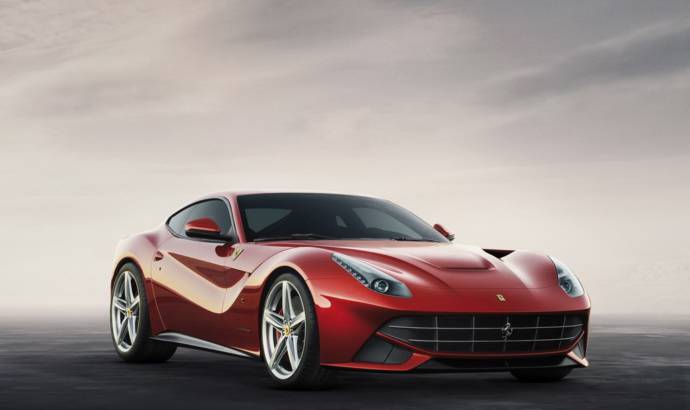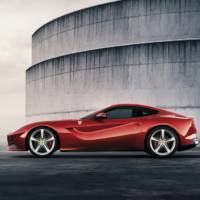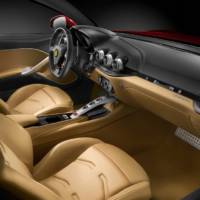As promised, Ferrari has lifted the wraps of the 599 GTB Fiorano successor today, so meet the new F12 Berlinetta !
Powered by a new 12-cylinder engine, aerodynamically designed and
finished a new three-layer color (Rosso Berlinetta), the new F12
Berlinetta represents "the very cutting-edge of
mid-front-engined sports cars".
In fact the Italian brand call this the most powerful and
high-performance Ferrari road
car ever launched and the numbers that will support this statement are
740 HP at 8,500 rpm and 690 Nm of peak torque at 6,000 rpm, delivered
from a 65-degree, 6.3-litre engine.
Its dimensions are 4,618 mm in length, 1,942 mm in width and
1,273 mm in height, and with a total mass of 1,525 Kg (distributed 46 %
to the front and 58 % to the rear) it means if has a power to weight
ratio of 2,1Kg/HP.
So when it comes to performance, these figures translate into 0 to 100
Km/h in 3.1 seconds (0 to 200 Km/h in 8.5 seconds) and a top speed of
340 Km/h, thanks also in part to car’s F1 dual-clutch transmission which
was specially developed with shorter gear ratios.
Apart from the naturally aspirated engine which is described as a
masterpiece in terms of mechanical, combustion and fluid-dynamics
efficiency, the Ferrari F12 Berlinetta comes with a new layout of the
rear suspension and gearbox and a shortened wheelbase which demanded the
V12, the dashboard and the seats to seat lower in the chassis
And speaking about the F12 Berlinetta’s body spaceframe chassis and
bodyshell, Ferrari said it had used 12 different kinds of alloys in the
construction of these elements, some of which are a first in the
automotive sector.
It terms of fuel economy Ferrari claims it has reduced consumption by 30
percent and has also achieved CO2 levels of just 350 grams per Km by
focusing of the car’s engine, aerodynamics, tyres and weights.
The new F12 Berlinetta is also able to generate 76 percent more
downforce (123 kg at 200 km/h) while its drag coefficient has reduced to
just 0.299 through the adoption of two clever solutions called the Aero
Bridge and the Active Brake Cooling.
The Aero Bridge uses the bonnet to generate downforce by channelling
air away from the upper part of the car to its flanks, while the Active
Brake Cooling is a system that only operates at high temperatures, which
opens guide vanes to the brake cooling ducts.
Completing the F12 Berlinetta’s impressive list of technical
specifications are the latest generation carbon-ceramic brakes (CCM3)
and an improved magnetorheological suspension control system (SCM-E).
Video :

29 Feb 2012
0









